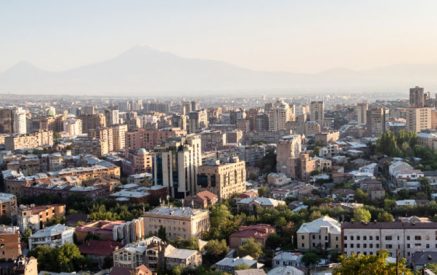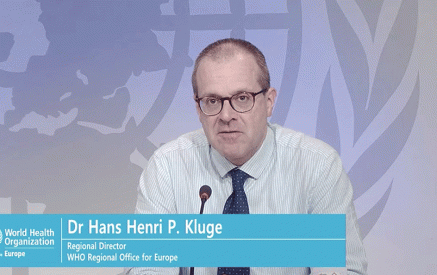Arman Gyulgazyan
AIISA Associate Fellow
King’s College London, Political Economy BA
Read also
This paper discusses the economic impact of the COVID-19 crisis across industries and countries. It discusses the economic channels through which economic activity will be impacted and the asymmetric results across countries and industries. It also attempts a rough estimate of the potential global economic costs of COVID-19 under different scenarios.
The COVID-19 outbreak started in December 2019 in Wuhan city in China. It continues to spread across the world. As of the time of writing this report the total has risen to almost 10 million cases worldwide. And nearly 500,000 have died. While some countries have been able to treat the reported cases effectively, it is uncertain where and when new cases will emerge. Every day more cases are reported, and new countries enter the World Health Organization’s (WHO) list of areas where the virus has been reported. It seems, however, as if the cases reported from China have peaked and are now falling. The opposite trends are seen in Europe and America. Given the public health risk, the WHO has declared an emergency of international concern.
In a strongly connected and integrated world the impacts of the disease go way beyond mortality. As such, governments around the world have been preparing contingency plans and aid packages to sustain their economies. In China, we have seen severe lockdowns. This has led to a decrease in consumption and interruptions to production. Overall, the functioning of global supply chains has been disrupted, affecting companies across the globe. Millions of people could lose their jobs over the coming months. In addition, every day we hear worrying news about more companies shutting down operations, revising estimates or announcing layoffs. Consumers have also changed their consumption patterns resulting in shortages of many goods in supermarkets around the world. Global financial markets have registered sharp falls and volatility is at levels similar, or above, the financial crisis of 2008/9.
According to the IMF the COVID-19 pandemic is inflicting high and rising human costs worldwide and the necessary protection measures are severely impacting economic activity. As a result of the pandemic, the global economy is projected to contract sharply by 3% in 2020, much worse than during the 2008–09 financial crisis. As for Armenia, the IMF predicts an economic decrease of 1.5%. Additionally, the OECD Outlook on the change in GDP (2020) focuses on two equally probable scenarios – one in which a second wave of infections, with renewed lockdowns, hits before the end of 2020, and one in which another major outbreak is avoided. In the case of the former the projection for the World Economy is -6%, whereas the latter is -7.2%.
SECOND HALF WORSE THAN THE FIRST
The recent evidence shows China’s GDP has decreased in the first quarter of 2020. Since China is approximately 16% of the global economy, that is bad news for the whole world. Prior to the crisis, the estimated GDP growth in China for the first quarter was 6%. As of today, we are entering into a global pandemic scenario.
Over the past month, all over the world, we have started to have restrictions put on public life. Countries followed the example of China: lockdowns, mobility restrictions, massive quarantine hospitals, increase in public health measures, protection of the elderly, etc. There are also limits on travel, companies are sending their workers home, airplanes are grounded, etc.
The reality is that most western countries are 1.5-2.5 months behind China in terms of the outbreak. They are also behind in terms of the implementation of corrective measures, and it is doubtful whether the confinement efforts will be as successful as in China. Therefore, it is guaranteed that the second half will be worse than the first one in the majority of countries worldwide. Recent evidence from the end of first half confirms this. In the U.S.A more jobs were lost (more than 10 million) during the last two weeks of March, than during the 2008-2010 crisis. In the last week of March 6.7 million U.S. workers filed for unemployment benefits – previous maximum was less than 700.000…
INDUSTRY VARIATION: SERVICE HIT HARDEST
Several countries are in lockdown mode for an indefinite time. People are working from home or simply not working. We are facing travel bans, sporting event cancellations and prohibitions on gatherings. People in Europe have not been (and the majority are still not) using public transport and are avoiding public spaces, such as restaurants, shopping centers and museums.
All sectors will be affected. There is evidence that discretionary spending by consumers has collapsed. However, the consequences of COVID-19 will not be equally distributed throughout the economy. The problems are particularly bad in hospitality related sectors. Indeed, the global travel industry—from airlines to cruise companies, from casinos to hotels—is facing reductions of activity of more than 90%. Tourist destinations are deserted, airlines are grounding fleets and firing staff, trade fairs and cruises are being cancelled, hotels and casinos closing all operations…
Besides these, there are other businesses that rely on tourism and will suffer spillover effects. On top of travel restrictions and quarantines companies are cancelling travel and meetings and governments have closed borders. Additionally, it is well known that Chinese tourists are the world’s biggest spenders. A substantial drop in travel affects many world destinations substantially. Obviously, countries like Greece, Portugal, Mexico or Spain that are more reliant on tourism (more than 15% of GDP) will be more affected by this crisis. Despite globalization much activity remains local.
Many of the services we use on a daily basis are not traded and remain locally sourced. Here too, there is a strong negative impact to the economy. As people cancel appointments at the dentist, postpone their haircuts, do not go out for their weekly meal or wait to put their house on the market, this is a strong blow to service-oriented economies. Indeed, in service sectors the majority of the lost output is never going to be recovered. If you are thinking of buying a mobile phone or a microwave, you are likely going to wait and buy that product later (assuming this shock is temporary and you still have a job and available income when it’s over). However, if you do not go out to restaurants for your weekly dinner during this shut-down, it is very unlikely that you will start to have dinner out every day when the COVID-19 crisis disappears, to make up for the “lost dinners.” Nor will you cut your hair twice in the same week.
SUPPLY CHAINS AND GLOBAL TRADE ARE DISRUPTED
Supply chain networks is another channel through which the COVID-19 negatively impacts the global economy. As evidence from different markets confirms, the functioning of global supply chains has been disrupted by the current crisis. And this is generating spillover effects throughout different levels of supplier networks. Global trade in 2020 will fall in every region of the world and will affect all sectors of the economy. This will impact countries that are strong exporters (no output for their local companies), but also those that are importers (lack of raw materials).
The World Trade Organization (WTO) expects global trade to fall up to 32% this year due to the coronavirus pandemic. Car companies are shutting operations for lack of parts. This is happening in most industrial sectors. Even in luxury goods, like Swiss watches, manufacturers are facing disrupted supplies of components. The disruption to supply chains will increase the cost of business for manufacturing companies. Companies—like toy manufacturer Hasbro, which source almost 70% of its products from China—are suffering. As factories shut down in China and transportation routes collapse, it has been increasingly difficult for a company like Hasbro to get its products to the market.
According to the U.S. Institute for Supply Management 75% of companies report disruptions in their supply chains. Also, according to this survey, lead times have doubled for many U.S. companies. In addition, there have been shortages of raw materials and final products. This is all exacerbated by the shortage of air and ocean freight options to move products around the world. The damage is real. Of course, this is questioning the just-in-time strategy of many companies, who try to minimize inventories at all costs. The trade-off between efficiency and resilience has been clear now to many managers. Understandably, some companies prefer to have facilities (or suppliers) in various countries as a risk minimization strategy, even if this means a slightly higher-than-average cost.
RECENT CHINESE DATA
Chinese officials said that the peak of the pandemic has passed. However, most believe it will take months before China’s economy returns to normal. The spread of the virus around the world is also creating fears of a global recession, which further decreases the demand for Chinese products. The most recent data from the National Bureau of Statistics showed how the majority of analysts were wrong and underestimated the impact of the crisis. These recently released data indicated that industrial output fell, in the first two months of 2020, by more than 13.5%. The median forecast of analysts polled by Reuters predicted a gain of 1.5%.
Similarly, investment in fixed assets fell 25% year-on-year. Here, analysts were forecasting 2.8% growth for 2020 (compared with 5.4% growth in the end of 2019). Chinese consumers respected the lockdowns and their authorities’ recommendations. They were fearful of the virus, and thus moved away from shopping malls, restaurants and movie theatres. As a result, retail sales collapsed by 20% compared with a forecast of 0.8% by analysts (and very far from the +8% growth in December).
Data released on March 16, 2020 indicated that 5 million people in China lost their jobs in January and February (CNBC). But it’s likely the figure will grow to more than 9 million (Economist Intelligence Unit). Infrastructure investment was also down in the first two months (30% from a year earlier). This is despite local governments’ paying for a number of projects through their bonds sold since the start of the year ($140 billion). It is important to know that 2020 also marks the end of China’s current five-year development plan. Within this plan there was an objective of doubling the size of the Chinese economy by 2020 (relative to 2010). In order to do that, growth above 6% was needed for 2020. It is also now clear that the COVID-19 has spread globally, which will dampen demand globally and mean less demand for Chinese products.
STOCK MARKET EVIDENCE
Stock markets collapsed in March 2020. Most stock indices around the world have registered their biggest one-day falls on record. For example, the Dow Jones Index registered the worst ever one-day fall (2,977 points on March 16, 2020). And several well-known companies have seen their share prices fall by more than 80% in a few days. The U.K. and German stock markets have seen even worse performances than the U.S. (U.K. -37%, Germany – 33%).
Oil, gas, and coal firms lead the negative returns (on average 50% below start-of-the-year prices) driven largely by a plunge in oil prices and a decline in global consumption. As expected, travel & leisure (including hotels, restaurants, etc.), aerospace, mining, banks, and media are all examples of sectors that have fallen by more than 30%. No sector was left unharmed by this collapse in stock prices. Even traditionally stable sectors (like utilities, tobacco and pharmaceuticals) are all down by 20% or more.
CONCLUSION
In this uncertain environment it is difficult to forecast the economic impact of the COVID-19 crisis. As explained above, there is no historical benchmark that we can use directly. Indeed, no prior crisis has started like this: a health event, global, that influences supply and demand simultaneously, in a period, when central banks have no firepower left (due to the zero or negative interest rates already in place).
The COVID-19 crisis spread rapidly throughout the world in the last months. We are facing a totally new type of crisis. In this case, the health risk (actual mortality and infection rates) is not necessarily correlated with the economic risk to the global economy. Historically, global trade has allowed countries to share risk. This time, this channel is not likely to help much. This is a global shock when the world is much more integrated. Interest rates are at historical lows, and the current crisis is also generating spillover effects throughout supply chains.
A global recession now seems inevitable. But how deep and long the downturn will be, depends on the success of measures taken to prevent the spread of COVID-19. It also depends upon how companies react and prepare for the re-start of economic activities. And, above all, it depends on how long the current lockdowns will last. At the date of this paper, the duration of the lockdown, as well as how the recovery will take place, is still unknown. No one can accurately predict the final financial damage from COVID-19. This obviously depends on timing, the severity of the pandemic into future weeks/months and countries’ policy responses. Also, hopes of a coronavirus vaccine mount, which would be welcome news. If the ongoing crisis lasts until the end of the summer, the global economy faces the gravest threat seen in the last two centuries.
BIBLIOGRAPHY
- Bloom D. E., Cadarette D. and Sevilla J.P. (2018). “The Economic Risks and Impacts of Epidemics”, International Monetary Fund, F&D Magazine.
- “China’s Economy Suffers Historic Slump Due to Virus Shutdown”. (2020, March 16). Bloomberg News.
- Congressional Budget Office (2005) “A Potential Influenza Pandemic: Possible Macroeconomic Effects and Policy Issues”. CBO Washington DC.
- Esposito, A. (2020, March 16) “The Worst Hit Equity Sectors in 2020”. Morningstar.
- Fan V. Y., Jamison D. T. & Summers L. H. (2018) “Pandemic risk: how large are the expected losses?” Bulletin of the World Health Organization.
- Global Preparedness Monitoring Board (2019). “A world at risk: annual report on global preparedness for health emergencies”. Geneva: World Health Organization.
- JP Morgan (2019, December 19) “Global Market Outlook 2019: Higher Growth Outside of US, Lower Returns”.
- Lo, K. (2020, March 1) “Coronavirus: China says over 90 per cent of state firms back in business after manufacturing index hits all-time low”. South China Morning Post.
- McKibbin W. and A. Sidorenko (2006) “Global Macroeconomic Consequences of Pandemic Influenza”. Brookings.
- OECD (2020, 2 March) “Global economy faces gravest threat since the crisis as coronavirus spreads”.
- Payme, A. (2020, March 13) “Germany has offered companies ‘unlimited’ loans to stop them from collapsing because of the coronavirus pandemic”. Business Insider.
- Ruffino, G. (2020, March 12) “Coronavirus causes Swiss Watch makers more Grief”. CNN Money Switzerland.
- Solsvick, T. (2020, March 16) “Norwegian Air to cancel 85% of flights and lay off 90% of staff”. Reuters.
- Voytko, L. (2020, March 18) “Coronavirus Layoffs: Marriott, Danny Meyer Restaurants Join List Of Companies Shedding Jobs Due To The Pandemic”. Forbes.
- Walsh, D. (2020, March 17) “Travel giant in lockdown as it applies for state aid”. The Times.
- Wink, B. (2020, March 13) “JP Morgan officially forecasts a coronavirus-driven recession will rock the US and Europe by July. Market Insider”.
- World Bank Group (2019) “Pandemic Preparedness Financing – Status update”. World Bank, September 2019.
- World Health Organization (2019) “A World at Risk’. Annual report on global preparedness for health emergencies”. Geneva: World Health Organization.
Democracy, Security and Foreign Policy Programme (NED)
The Armenian Institute of International and Security Affairs (AIISA)






















































